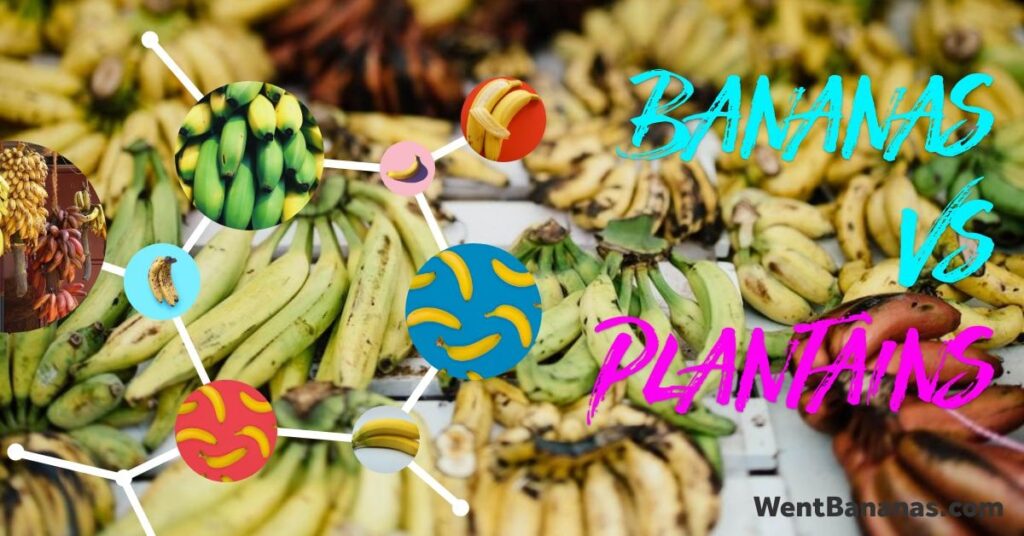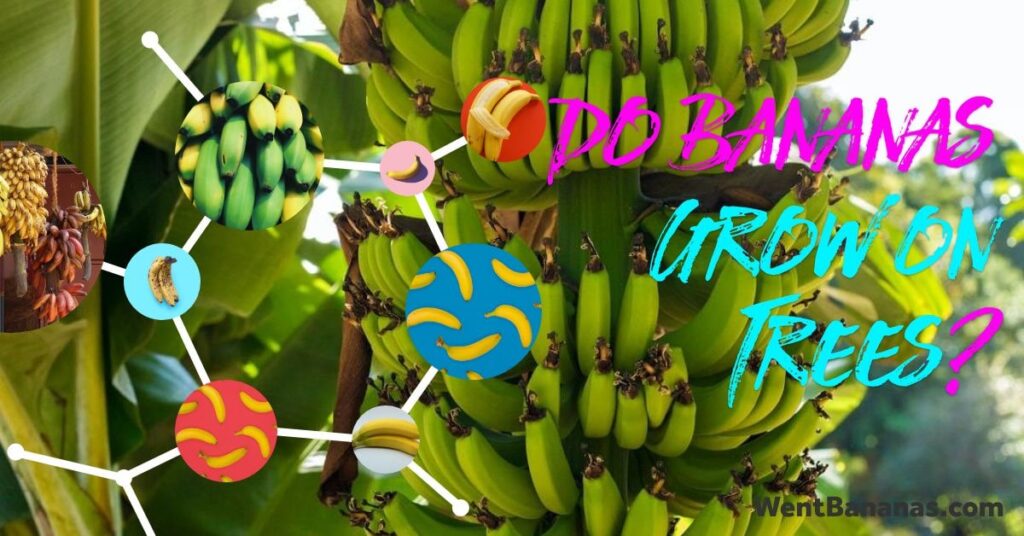Key Takeaways
- Diverse Banana Varieties Enhance Recipes: Utilize different types like Cavendish, Lady Finger, and plantains to add unique flavors and textures to your dishes.
- Choose Based on Ripeness and Texture: Select bananas at the right ripeness to achieve the desired consistency, whether for smooth smoothies or firm fried plantains.
- Optimize Cooking Techniques: Apply baking and frying methods tailored to each banana variety to maximize their natural sweetness and starchiness.
- Enhance Flavors with Complementary Ingredients: Pair bananas with spices, citrus, and crunchy elements to create balanced and textured meals.
- Effective Storage and Preparation: Manage banana ripeness, use proper peeling techniques, and freeze excess bananas to maintain freshness and versatility in cooking.

Cooking with different banana varieties is more exciting than you might think. I’ve discovered that each type brings its unique flavor and texture to the table, making every meal a new adventure. From the sweet plantains perfect for frying to the creamy apple bananas that elevate desserts, there’s so much to explore.
Different Banana Varieties
I love exploring various banana types, each offering unique flavors and textures for different dishes. Here’s a look at some key varieties used in cooking.
Sweet Bananas
Sweet bananas, such as Cavendish and Lady Finger, provide a creamy texture and natural sweetness perfect for desserts, smoothies, and baking. They enhance recipes by adding consistent flavors and moisture.
Plantains

Plantains have higher starch content and lower sweetness compared to sweet bananas. I use them for frying, boiling, or baking, as they maintain their structure in savory dishes, adding depth and texture.
Choosing the Right Banana for Your Recipe
Selecting the right banana variety can elevate your dishes. Each type offers unique textures and flavors that complement different recipes.
Ripeness and Texture
Ripeness determines texture suitability. Ripe Cavendish bananas with brown spots blend smoothly into smoothies, while underripe green plantains maintain firmness for frying. Slightly ripe bananas strike a balance, perfect for baking rich bread or muffins.
Flavor Profiles
Flavor influences dish compatibility. Sweet Lady Finger bananas add a delicate sweetness to desserts, apple bananas introduce a mild tang to fruit salads, and starchy plantains provide a savory depth to main courses. Understanding these profiles helps match bananas to your culinary needs.
Cooking Techniques
I love experimenting with different cooking methods to highlight each banana variety’s unique qualities. Here are some techniques I use to maximize their flavors and textures.
Baking with Bananas
Baking bananas enhances their natural sweetness and creamy texture. I use ripe Cavendish or Lady Finger bananas in banana bread, muffins, and cakes for optimal flavor. Plantains work well in baked savory dishes like casseroles or as a side to complement meats. Adjust baking times based on banana ripeness; softer bananas bake faster, while firmer ones may require longer periods to soften.
Frying Bananas
Frying brings out the starchiness of plantains and the sweetness of other banana varieties. I slice ripe plantains and fry them for sweet banana chips or as a side dish. Green plantains are perfect for tostones, maintaining firmness and crispiness. For sweet fried bananas, I choose apple bananas, which hold their shape and enhance natural sugars during frying. Controlling the oil temperature ensures the desired texture; lower heat for even cooking, higher heat for crispiness.
Tips and Tricks
Maximize each banana variety’s potential with these expert strategies.
Flavor Enhancements
- Pairing Ingredients: Pair sweet bananas like Cavendish with sour elements such as citrus or dark chocolate to create balanced flavors.
- Adding Spices: Add spices like cinnamon or ginger to enhance plantains in both sweet and savory dishes.
- Incorporating Textures: Incorporate crunchy nuts or seeds with creamy bananas to add texture to smoothies and salads.
- Marinating Flavors: Marinate green plantains with herbs or spices before cooking to infuse deeper flavors.
Storage and Preparation
- Managing Ripeness: Keep bananas at room temperature until ripe, then refrigerate to extend freshness for recipes.
- Peeling Techniques: Score the stem or make a small incision to peel stubborn bananas easily.
- Freezing Bananas: Freeze bananas peeled and sliced when overripe for use in smoothies and baking.
- Cutting Uniformly: Slice plantains evenly to ensure consistent cooking when frying, baking, or boiling.
Conclusion
Cooking with different banana varieties has truly expanded my culinary horizons. I love experimenting with each type and discovering new ways to enhance my dishes.
Whether I’m baking a sweet treat or preparing a savory meal plantains always come through. The versatility of bananas makes every cooking adventure exciting and rewarding.

I encourage you to explore the variety of bananas available and enjoy the delightful surprises they bring to your table.
Frequently Asked Questions
What are the best banana varieties for baking?
Ripe Cavendish and Lady Finger bananas are ideal for baking. They add natural sweetness and a creamy texture to baked goods like banana bread and muffins, enhancing flavor without needing extra sugar.
How do plantains differ from sweet bananas in cooking?
Plantains have higher starch and lower sweetness compared to sweet bananas. They are versatile for savory dishes and can be fried, boiled, or baked, providing depth and structure, whereas sweet bananas are best for desserts and smoothies.
How does ripeness affect banana usage in recipes?
Ripeness impacts texture and flavor. Ripe bananas, like Cavendish, blend smoothly into smoothies and desserts, while underripe green plantains remain firm, making them perfect for frying or adding structure to savory dishes.
What are some expert tips for cooking with bananas?
Pair sweet bananas with sour elements, add spices to enhance flavors, incorporate textures like nuts, manage ripeness for optimal use, use effective peeling methods, and freeze overripe bananas for later use to maximize their potential in various dishes.
Can different banana types be used in both sweet and savory dishes?
Yes, certain banana types are versatile. Sweet bananas like Cavendish and Lady Finger are perfect for desserts and smoothies, while starchy plantains are suited for savory main courses. Apple bananas can be used in both sweet fruit salads and sweet fried dishes.

What cooking techniques maximize banana flavors and textures?
« The Sweetness Spectrum: From Mild to Very Sweet Bananas – Discover the Best Varieties for Every Recipe
How to Select the Best Banana for Your Needs: Expert Tips for Every Use »
Baking enhances the sweetness of ripe Cavendish or Lady Finger bananas in items like banana bread. Frying brings out the starchiness of plantains and the sweetness of other bananas. Boiling and baking plantains add depth to savory dishes. Adjusting heat levels ensures desired textures.
How should bananas be stored to maintain freshness?
Store bananas at room temperature to manage ripeness. To slow ripening, keep them in the refrigerator once they reach desired ripeness—the skins may darken, but the fruit stays fresh. Freeze overripe bananas for later use in smoothies or baking.
What are the best ways to prepare plantains for cooking?
Peel plantains by cutting off the ends and making a slit along the peel. Slice uniformly to ensure consistent cooking. Depending on the recipe, plantains can be fried, boiled, or baked. Uniform cuts help achieve even texture and flavor.
How can bananas enhance savory dishes?
Starchy plantains add depth and structure to savory dishes. They can be fried as a side, incorporated into stews, or baked in casseroles. Their natural starchiness complements meats and vegetables, creating balanced and flavorful meals.
What flavor profiles do different banana varieties offer?
Lady Finger bananas have a delicate sweetness ideal for desserts. Apple bananas offer a mild tang, perfect for fruit salads. Cavendish bananas provide a creamy texture and sweet flavor suitable for smoothies and baking. Plantains offer a savory, starchy profile for main courses.
















